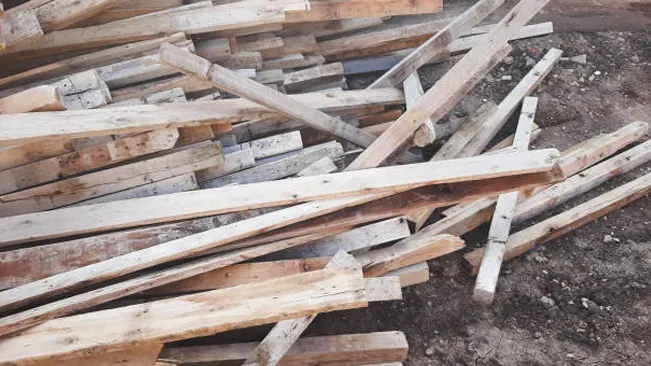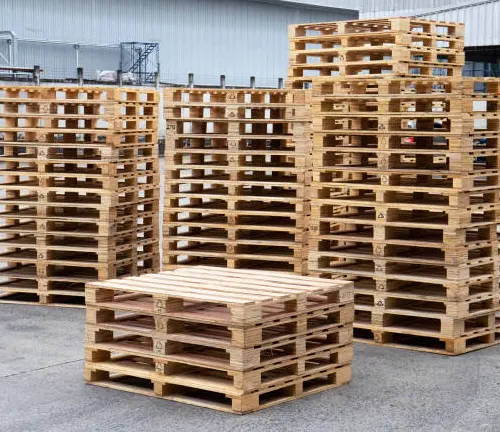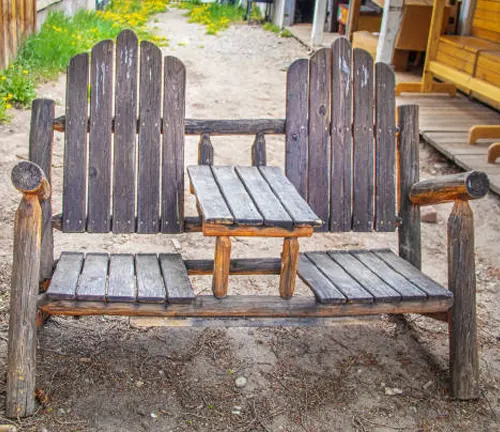What Is Reclaimed Wood?
- September 25, 2024
- 0 comment
Reclaimed wood refers to timber that has been salvaged from old structures and repurposed for new projects. This type of wood, often sourced from barns, factories, and other decommissioned buildings, offers a sustainable alternative to newly harvested timber. Its appeal lies not only in its environmental benefits but also in its unique aesthetics, characterized by weathered textures and rich patinas. R

reclaimed wood has become a popular choice in both residential and commercial design, merging history with modern sustainability practices.
Sources of Reclaimed Wood
Reclaimed wood can originate from a range of sources, each contributing to its distinctive character. These sources are often rich in history, which adds a narrative to the materials used in modern applications.
1. Old Buildings and Barns
Timber from deconstructed barns, factories, and warehouses is among the most common sources of reclaimed wood. These structures provide large beams, floorboards, and paneling that have aged beautifully over time.
2. Shipping Pallets and Crates
Used pallets and crates, often discarded after their primary use, are a valuable source of reclaimed wood. They are typically made from durable hardwoods, making them ideal for repurposing into furniture and other projects.

3. Railroad Ties and Bridges
Railroad ties, bridge beams, and even planks from old docks offer a rugged, weather-resistant type of wood. These materials are often dense and sturdy, ideal for large structural projects.
4. Furniture and Flooring
Old furniture, doors, and flooring materials can be repurposed into new designs. These pieces are often made from high-quality hardwoods that have stood the test of time.
Characteristics of Reclaimed Wood
Reclaimed wood is prized for its distinctive qualities, which set it apart from newly milled timber. These features make it highly desirable for architects, designers, and homeowners alike.

1. Unique Aesthetics
The weathered appearance, including knots, nail holes, and other imperfections, gives reclaimed wood a unique character that cannot be replicated with new wood. These characteristics add warmth and charm to any space.
2. Durability
Older wood is often denser and more durable due to the slower growth patterns of trees in the past. This makes reclaimed wood stronger and more resistant to wear and tear compared to
3. Variety
Reclaimed wood comes in a wide range of species, including oak, pine, chestnut, and even rare hardwoods. The variety of available woods offers flexibility in design and application.
Benefits of Using Reclaimed Wood
Choosing reclaimed wood for a project comes with numerous advantages, both for the environment and for the aesthetic quality of the finished product. These benefits make reclaimed wood a highly valued material in modern design.

1. Environmental Sustainability
Using reclaimed wood reduces the demand for newly harvested timber, thereby helping to protect forests and natural habitats. This practice supports sustainable building efforts by recycling existing materials.
2. Reduction of Waste
By repurposing wood that would otherwise end up in landfills, reclaimed wood helps reduce waste and promotes responsible consumption. This contributes to a more circular economy.
3. Energy Savings
Reclaimed wood typically requires less processing compared to newly cut timber, which reduces the energy consumption associated with its production. The overall carbon footprint of using reclaimed wood is smaller than that of harvesting new lumber.
4. Cultural and Historical Value
Reclaimed wood often comes from historically significant structures, giving the materials a unique story. Incorporating these elements into new designs adds cultural depth and authenticity to the project.
Common Uses of Reclaimed Wood
Reclaimed wood can be utilized in various applications, from practical structural uses to decorative accents in homes and businesses. Its versatility makes it an ideal material for a wide range of projects.
1. Furniture
Reclaimed wood is often used to craft custom furniture pieces, such as tables, chairs, and shelves. The character of aged wood adds warmth and individuality to each item.

2. Flooring
Reclaimed wood flooring is highly sought after for its rustic, timeless appearance. It adds a sense of history and charm to both traditional and contemporary interiors.
3. Architectural Elements
Beams, doors, and wall cladding made from reclaimed wood can bring a sense of heritage to modern spaces. These elements are popular in both residential and commercial architecture.

4. Decorative Applications
Smaller reclaimed wood projects, such as picture frames, mirror surrounds, and wall art, offer unique decorative touches that enhance the eco-conscious design of a space.
Challenges of Working with Reclaimed Wood
While reclaimed wood has numerous benefits, it also presents certain challenges that should be considered when choosing it for a project. These challenges can impact both the cost and the labor required to work with the material.
- Processing and Refinishing: Reclaimed wood often requires more preparation before it can be used. This includes removing old nails, de-nailing, sanding, and refinishing the wood to ensure it is suitable for its new purpose.
- Cost Considerations: The labor-intensive process of reclaiming and preparing wood can make it more expensive than new timber. However, many believe that the long-term benefits and unique qualities of reclaimed wood justify the higher upfront cost.
- Limited Availability: Some types of reclaimed wood, especially rare hardwoods or large beams, may be difficult to find in large quantities. This can limit project scope or require careful planning to ensure the right materials are sourced.
How to Identify Quality Reclaimed Wood?
When purchasing reclaimed wood, it’s important to ensure you’re getting high-quality material that will meet the needs of your project. Certain factors can help you identify the best pieces.
Certification and Provenance
Look for wood that comes with certification from organizations like the Forest Stewardship Council (FSC), which guarantees that the wood has been sourced responsibly. Additionally, reputable suppliers will be able to provide information on the origin of the wood.
Condition Assessment
It’s crucial to check for signs of rot, insect damage, or structural weaknesses before committing to reclaimed wood. These issues can compromise the integrity of the wood and affect its suitability for your project.
Authenticity
Be wary of artificially aged or distressed wood being sold as reclaimed. Genuine reclaimed wood will often have documentation or other indicators of its previous life.
Sustainability and the Future of Reclaimed Wood
Sustainability and the use of reclaimed wood are becoming increasingly important in the context of modern design and construction. As green building practices evolve, the demand for sustainable materials like reclaimed wood continues to grow.
This material fits seamlessly into trends that prioritize energy efficiency and environmental responsibility, making it a popular choice in LEED-certified projects. Innovations in technology are also making it easier to reclaim wood from urban sources, further expanding its availability and reducing waste in construction.

Overall, reclaimed wood plays a key role in promoting a circular economy by extending the lifecycle of materials and decreasing the need for newly harvested timber.
Conclusion
Reclaimed wood offers a unique blend of environmental sustainability, aesthetic appeal, and cultural significance, making it an excellent choice for a wide range of projects. Its durability, charm, and eco-friendly nature provide both immediate and long-term value.
Whether for furniture, flooring, or architectural features, reclaimed wood stands out as a timeless material that honors the past while supporting a more sustainable future.
Frequently Asked Questions (FAQ’s)
- What is reclaimed wood?
Reclaimed wood is timber that has been salvaged from old structures such as barns, factories, and warehouses, and repurposed for new uses like furniture, flooring, or architectural features. - Why should I use reclaimed wood instead of new wood?
Reclaimed wood is an environmentally friendly option that reduces the need for cutting down new trees. It also offers unique aesthetics, durability, and often carries historical or cultural significance. - Where does reclaimed wood come from?
Reclaimed wood comes from a variety of sources, including old buildings, barns, railroad ties, shipping pallets, and even old furniture or flooring. Each source contributes a different look and character to the wood. - Is reclaimed wood more expensive than new wood?
Yes, reclaimed wood can be more expensive due to the labor-intensive process of sourcing, cleaning, and preparing it. However, its long-term value and unique aesthetic qualities often justify the higher initial cost. - How can I tell if the wood is truly reclaimed?
Authentic reclaimed wood often comes with documentation or certification, such as from the Forest Stewardship Council (FSC). You can also look for signs like weathering, nail holes, and unique aging characteristics. - What are the benefits of using reclaimed wood?
Using reclaimed wood helps reduce deforestation, lowers waste, and cuts down on energy consumption in processing. It also provides a one-of-a-kind aesthetic and offers strong, durable materials for a range of projects. - Can reclaimed wood be used for structural purposes?
Yes, reclaimed wood can be used structurally, provided it is in good condition and has been properly inspected. Older wood can often be denser and more durable than new lumber, making it ideal for beams and other supports. - What are the challenges of working with reclaimed wood?
Challenges include the need for additional processing, such as removing nails or refinishing. Additionally, it may be more expensive and harder to find in large quantities, especially specific species or sizes. - Is reclaimed wood sustainable?
Yes, reclaimed wood is a highly sustainable material because it recycles existing resources, reducing the demand for newly harvested timber and minimizing waste. It supports the principles of a circular economy. - Can I use reclaimed wood in modern design projects?
Absolutely. Reclaimed wood is a popular choice in both rustic and contemporary design projects. Its unique textures and aged appearance add warmth and character to modern spaces while promoting sustainability.

James Wilson
Forestry AuthorJames Wilson has over 15 years of experience in forestry economics, specializing in sustainable practices, investment opportunities, and financial management. He has contributed to notable publications like "Forestry Today" and "EcoFinance Journal" and is known for providing practical and insightful advice. With a degree in Environmental Economics, James stays updated through continuous learning and active participation in industry discussions. Outside work, he enjoys hiking and nature photography, bringing a well-rounded perspective to his professional role.













Leave your comment